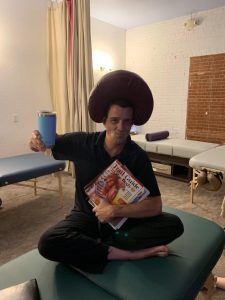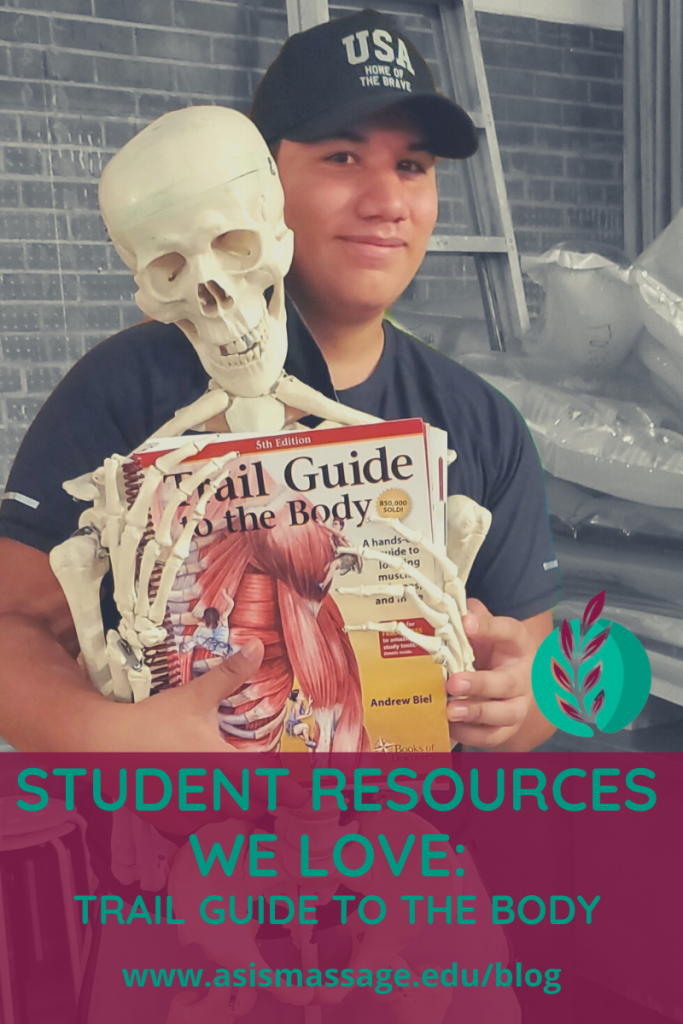
The students at ASIS use the Trail Guide to the Body as one of the their main texts throughout their program. (It is included in the tuition, along with all other books and supplies) It is not only our main text for our Kinesiology classes, we also reference it for our modality classes regularly. Understanding muscles: fiber direction, attachments and actions, elevates bodywork skills in many modalities. More on that in a bit.
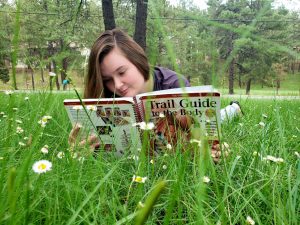
I set out to write a blog on one of my favorite features of the Trail Guide to the Body and in preparing content, I realized that there is so much to talk about the book itself, the company that supplies us with it, and the history of the guide. So I will save the favorite feature content for another post. You’ll have to be on the lookout for that one. It will be worth the wait. Spoiler alert! Be ready to have your mind blown!
But first, Mesa students Krystal and Sabrina will demonstrate how much we love the Trail Guide with a dance:
A little bit about what the Trail Guide to the Body is. From the Books of Discovery website:
Trail Guide to the Body was first published in 1997. Now in its 6th edition and with more than 900,000 copies sold, the textbook has become the gold standard for foundational musculoskeletal anatomy and palpation education.
Used by more than 2,500 programs worldwide and translated into 10 languages, Trail Guide to the Body prepares students for the skilled and knowledgeable practice of manual therapy in athletic training, massage therapy, occupational therapy, physical therapy, and various other bodywork, movement, and health care professions.
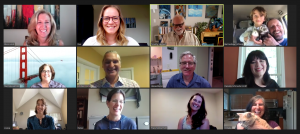
I had a chance to chat with our rock star contact at Books of Discovery, Education Accounts Manager Tracy McDermott, about the backstory of the Trail Guide recently. (Side note: Books of Discovery has phenomenal customer service and has gone above and beyond to support schools, particularly in the time of Covid and online and hybrid learning. I can’t thank them enough for having so many ready-to-go resources for us to use in the classroom, both in person and online.)
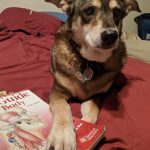
So Tracy and I were talking about how the Trail Guide came to be. Author Andrew Biel had an idea for a road map to the body to help connect things together in 1994. 3 years later, the first edition came to fruition. Over 20 years later, this guide has grown into many editions (it’s in its 6th edition currently) and other resources that support the Trail Guide and the students who use it. There are flashcards, posters, workbooks and an app now. Not to mention the additional texts available through Books of Discovery.
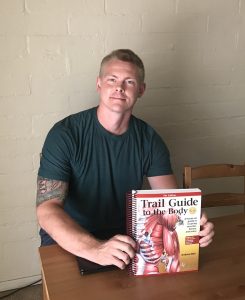
But back to the development. Mr. Biel has said himself that he struggled through his school years. When he became in instructor, he saw that there were students who also struggled with learning the complex body. He recognized that the texts that did exist for manual therapy did not have a lot of imagery. At the time, students were reliant on having all their bodywork learning come from their instructors. The responsibility all came from how well equipped and knowledgeable the instructor was. Mr. Biel could empathize with students who were lost, having struggled as a student himself. One of his students, Robin Dorn, would submit assignments with anatomical drawings on them. He teamed up with her as the illustrator and with his expertise in palpatory anatomy, the Trail Guide was born.
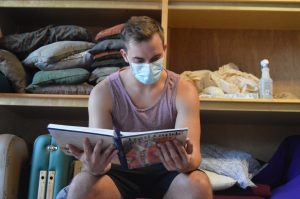
While I was watching an interview with Mr. Biel, I could understand why this text has resonated and helped so many students learn about the body and instructors how to teach about palpatory anatomy. My favorite part is when he discusses his own educational journey:
“As a writer and an educator, I have tried to remember what it’s like to want to learn, to try and understand something. When I create a learning tool, or even a sentence or paragraph of text or image, I try to keep in mind what it’s like to be in the shoes of someone who is really wanting to learn, but maybe having difficulty. “

As an educator, I see this every day in the classroom. I see eager students wanting to learn, wanting to be better bodyworkers but who occasionally get frustrated with not understanding or retaining everything right away. When we help to break things down for them in a different way, I can see the a-ha moments when they get it. The Trail Guide is instrumental in aiding us instructors to generate those moments. We teach students how to use the tools we’re giving them as a guide for them that will continue to be there for them well into their practice.
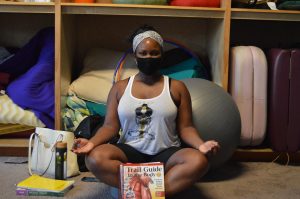
Mr. Biel set out to create something with more imagery as a resource for students. He not only supplied a way for wonderful illustrations to enhance students’ learning, but the way he teaches in the text gives the students and instructors different angles to understand how the body moves and how muscles work together. The Trail Guide has expanded to athletic training, massage therapy, occupational therapy, physical therapy, and various other bodywork and healthcare profession programs.
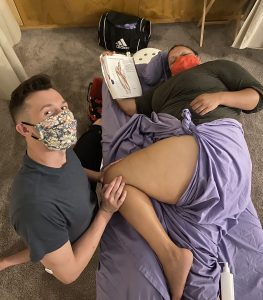
See the full interview I reference above:
Thank you, Andrew Biel and Books of Discovery, for giving us the Trail Guide to the Body. To find out more and to purchase any Trail Guide books or other resources, visit booksofdiscovery.com. You can also purchase the apps through Google Play or the App Store.
